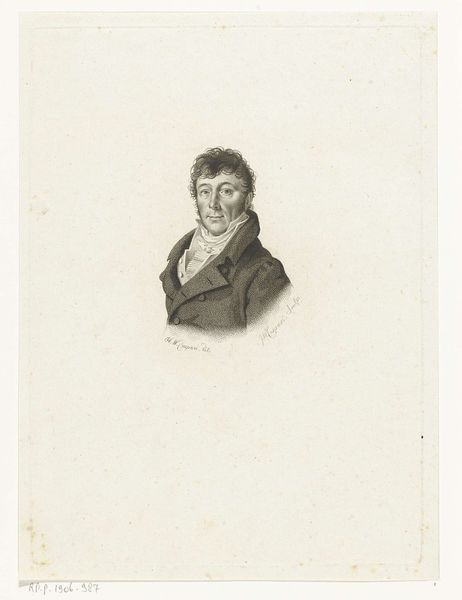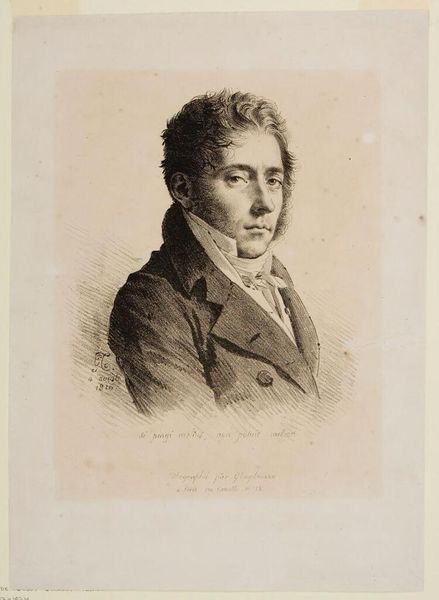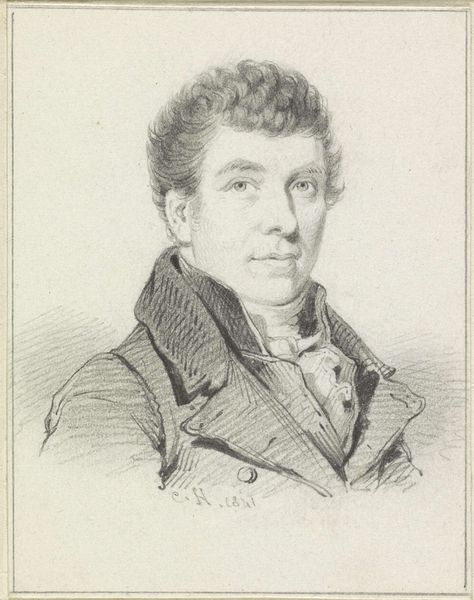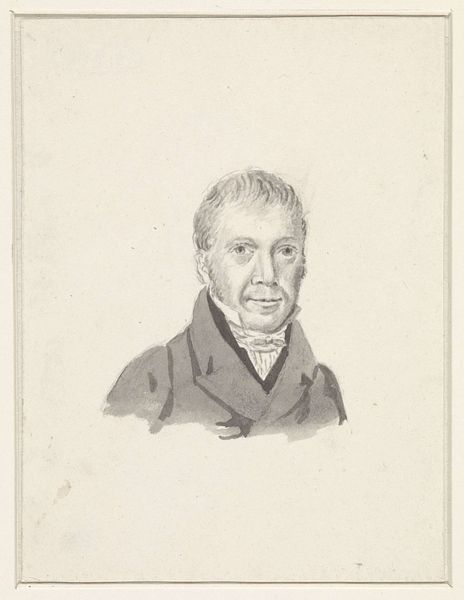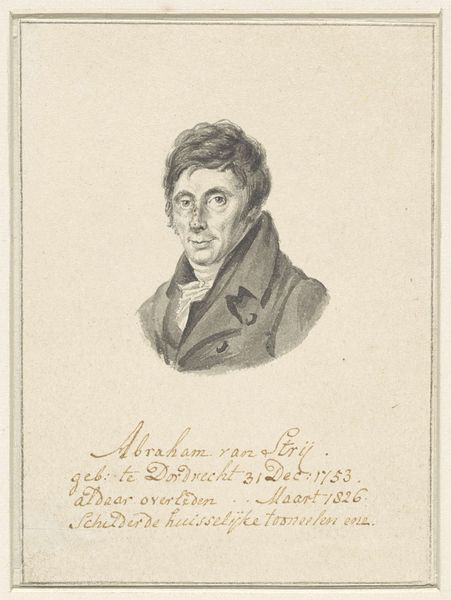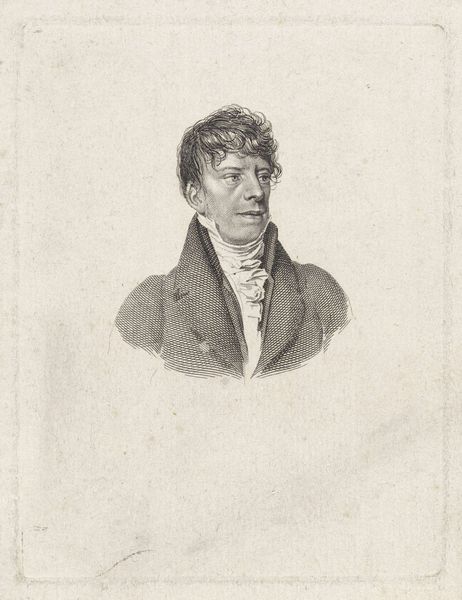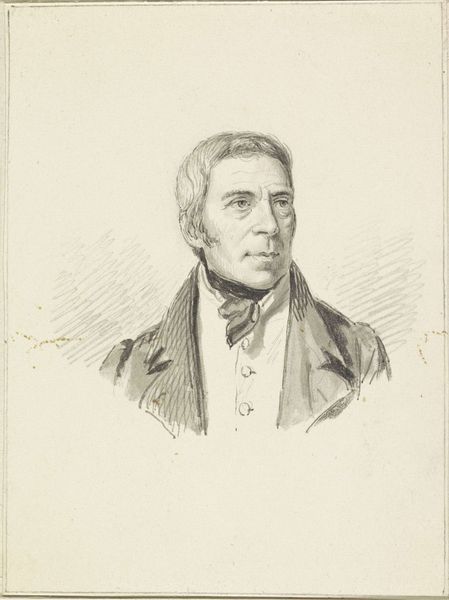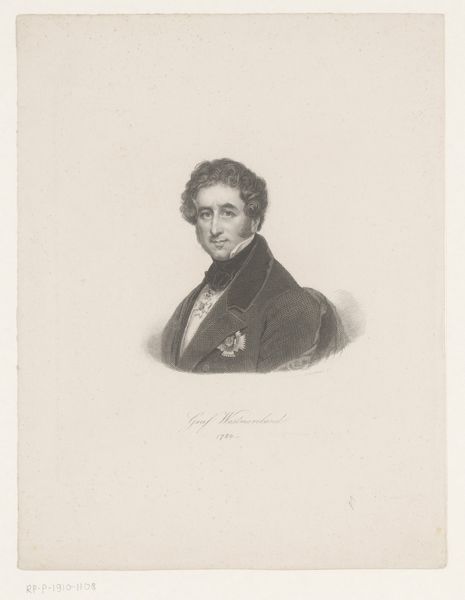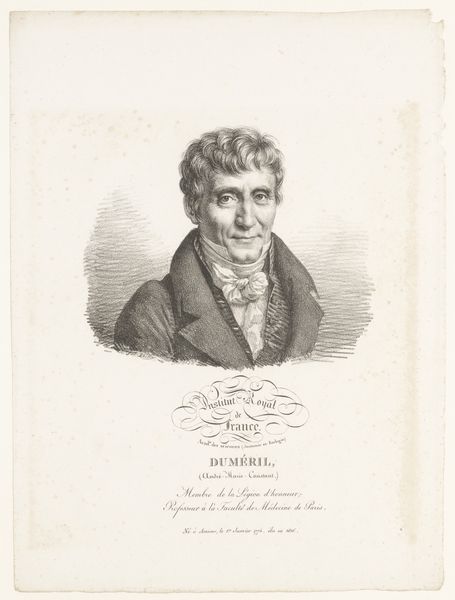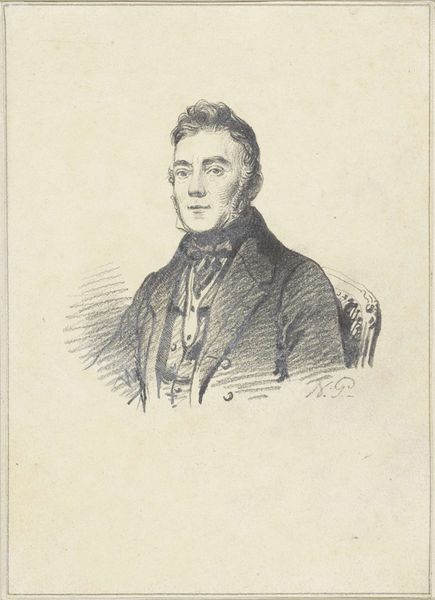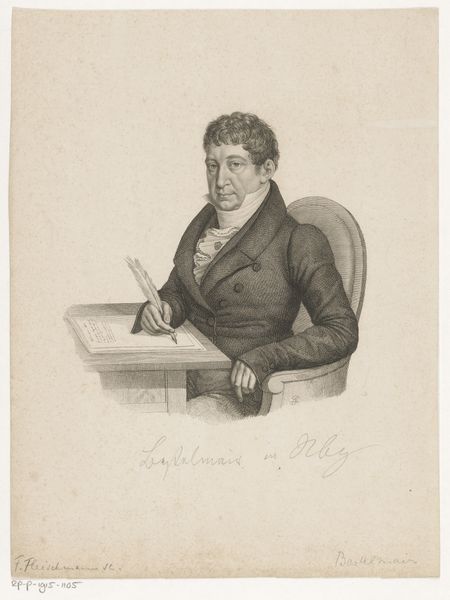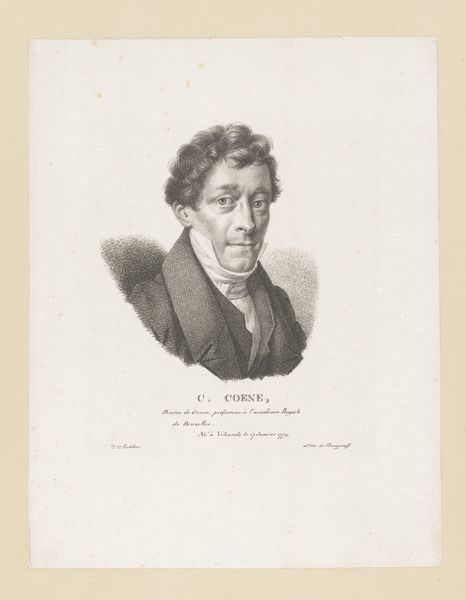
Dimensions: height 103 mm, width 81 mm
Copyright: Rijks Museum: Open Domain
Curator: Up next is the "Portret van Abraham van Strij," an engraving created around 1790 to 1902. What strikes you about it? Editor: There’s a remarkable austerity in this image. The stark contrasts from the engraving feel both delicate and somewhat severe. Curator: Precisely. Engravings like this held significant social currency, didn't they? Consider the rise of print culture in the 18th and 19th centuries, enabling mass production and wider circulation of images, reinforcing particular views. This engraving likely helped to solidify Strij's status within his artistic circles and community. Editor: Absolutely. And consider the labor! Each line is meticulously etched, demanding not only artistic skill, but significant time. It’s a testament to the engraver’s dedication. What would this signify for viewers, the intended consumers? Did they appreciate that intensive human input, the marks of the maker’s body involved in its creation? Curator: Without a doubt. Engravings held value not just for their representational accuracy but for their implied craftsmanship. It reinforced a hierarchy of skills and artistic values in society. Look how his jacket sits – its folds and lines hinting at success, power and a certain status. The sharp contrasts play into his expression. It feels deliberate. Editor: Yes, that’s interesting because the marks left by labor and industrial means are all over the jacket – the button work, cross-hatching—but the soft treatment of the face directs my focus on him as an individual. How do we negotiate this relationship between material object and human likeness? Curator: It’s that interplay, isn’t it? It represents both the individual, Abraham van Strij, and his broader social standing within a particular socio-economic and cultural framework. Editor: Well, the making processes certainly elevate him and make him accessible through reproducibility, too. The engraving's success hinged on both factors, no doubt. Curator: A fine observation. It is interesting to reflect how techniques, meanings, and distribution co-create one another. Editor: Definitely given me some new ideas about process!
Comments
No comments
Be the first to comment and join the conversation on the ultimate creative platform.

